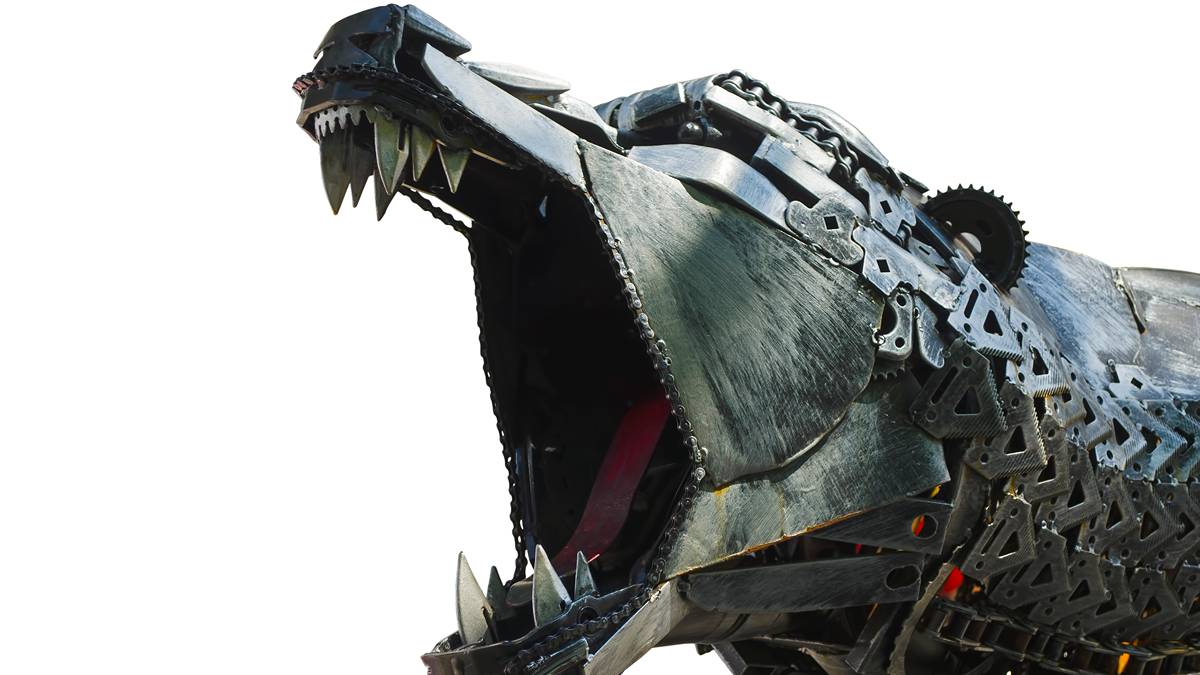Cyclone sets out path to develop one of the world’s largest high-grade iron ore mines

Iron Bear is roaring for Cyclone Metals, with a scoping study outlining the scale potential of a future high-grade iron ore mine. Pic: Getty Images
- The Iron Bear iron ore mine could produce 25Mtpa of high-grade products
- Mining giant Vale in the corner of ASX junior Cyclone to progress the US$4.6bn project
- PFS study to start imminently and finish in Q2 2026
Special Report: Australian junior Cyclone Metals Ltd has torn the wrapping paper off a landmark scoping study on its Iron Bear project in Canada, revealing what could become one of the world’s largest high-grade iron ore mines.
The magnetite deposit near Schefferville in Canada’s Labrador Trough contains a mammoth resource of 16.66Bt at 29.3% Fe.
And that could convert Cyclone Metals’ (ASX:CLE) project into a world-class 25Mtpa operation producing 16Mt of blast furnace concentrate grading close to 70% iron, and 9Mt of direct reduction pellets grading 71% Fe and just 1.1% SiO2 , based on metallurgical testing to date.
Testwork has shown that pellets produced from the latter has excellent metallisation properties, with the study setting up Iron Bear as one of the few mines globally that can satisfy the world’s growing demand for low emissions steelmaking.
Blast furnace steelmaking typically clocks in at more than 2t of CO2 per tonne of iron ore produced, while direct reduced iron, which uses gas as a reducing agent rather than coal, generates around a quarter of that.
Given the mine’s scale – and the study’s proposed 18 year mine life uses just 9% of the total mineral resource – capex does come in at a heady US$4.64bn. Cyclone management intend to upgrade Iron Bear’s resource in the future to achieve a more robust ratio between indicated and inferred, thus extending the mine life.
But Brazil’s Vale, the world’s largest and most experienced producer of high-grade iron ore, has already promised US$138m in development funding, delivering a pathway to a decision to mine which would take the funding challenge off Cyclone’s hands.
And the upside is big, with a US$9.79bn post tax NPV and 18.6% IRR, both measures of profitability which suggest the operations – surrounded by 50Mtpa of high-grade iron ore producers in the Labrador Trough including ArcelorMittal, Champion Iron (ASX:CIA) and Rio Tinto (ASX:RIO) – will be a long-term money-spinner.

Higher and higher
Steel is one of the most polluting industries in the world, contributing around 8% of global CO2 emissions.
The reliance of developing steel markets in Asia on blast furnaces also means it’s hard to abate, with coking coal a key input in the production process.
While deposits like Iron Bear are lower grade in the ground and more expensive to extract and process than hematite operations in WA’s vaunted Pilbara region, after processing they run at much higher grades that draw customer premiums.
The blast furnace concentrate’s higher grades mean less coal and energy are required to convert the material into crude steel.
Meanwhile, the DRI pellets will provide crucial feed for a low carbon process where investigations are underway on zero-emissions steelmaking replacing natural gas for hydrogen.
Of all the iron ore exported globally, less than 10% has the grade and low impurities to qualify for this refining process. Vale, which has taken a liking to Iron Bear, is the key player.
The study has been tabled at a long term 62% Fe iron ore price of US$90/t, with FOB operating costs of US$46.1/t for BF concentrate and US$67.8/t for DR pellets. But you can throw a premium over the top of that, and Cyclone has branded the long-term forecast conservative – over the past five years the IODEX has averaged closer to US$120/t.
A pre-feasibility study has already been commissioned off the back of the announcement, due for completion in Q2 2026.

Watch: Guy Le Page has a look at Iron Bear’s fundamentals
The Big Payback
Iron Bear is expected to ramp up from 12.5Mtpa in year two of operations to 17.5Mtpa in year five and the full 25Mtpa from year six, eventually employing close to 1000 people.
Payback is expected in just under seven years.
A project timeline has already been laid out beyond April 2028, when Vale and Cyclone would take a decision to mine.
Key activities to be completed as part of the 2026 PFS include pit design and mine layout, mine planning for a number of production scenarios, processing plant design and layout, environmental baseline studies and exploration agreements.

Vale has contributed US$11.3m ($17.6m) under the first phase of commitments set out in its development agreement with Cyclone and can spend up to US$120m on the second phase if it elects to proceed.
It can take a 75% stake in the project ahead of a decision to mine, which will only be made once pre-production capex has been committed.
Cyclone shares charged 8% higher in morning trade after the scoping study was released on Monday.
This article was developed in collaboration with Cyclone Metals, a Stockhead advertiser at the time of publishing.
This article does not constitute financial product advice. You should consider obtaining independent advice before making any financial decisions.
Related Topics
UNLOCK INSIGHTS
Discover the untold stories of emerging ASX stocks.
Daily news and expert analysis, it's free to subscribe.
By proceeding, you confirm you understand that we handle personal information in accordance with our Privacy Policy.








